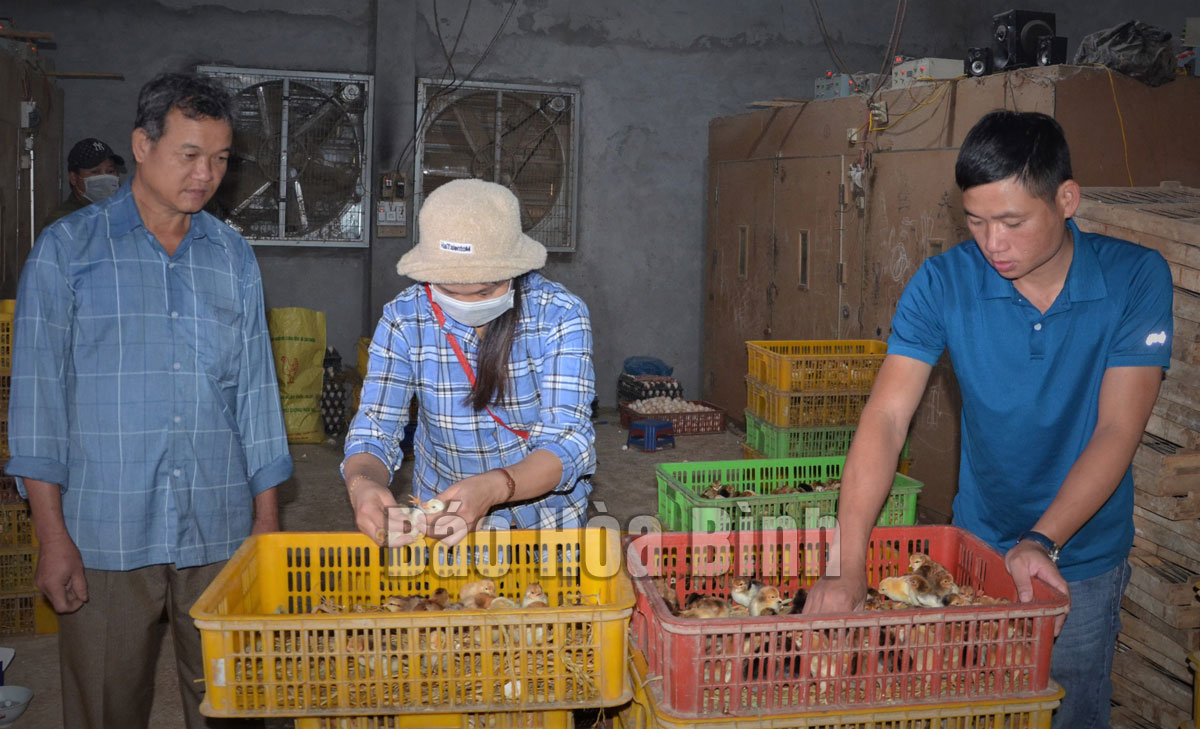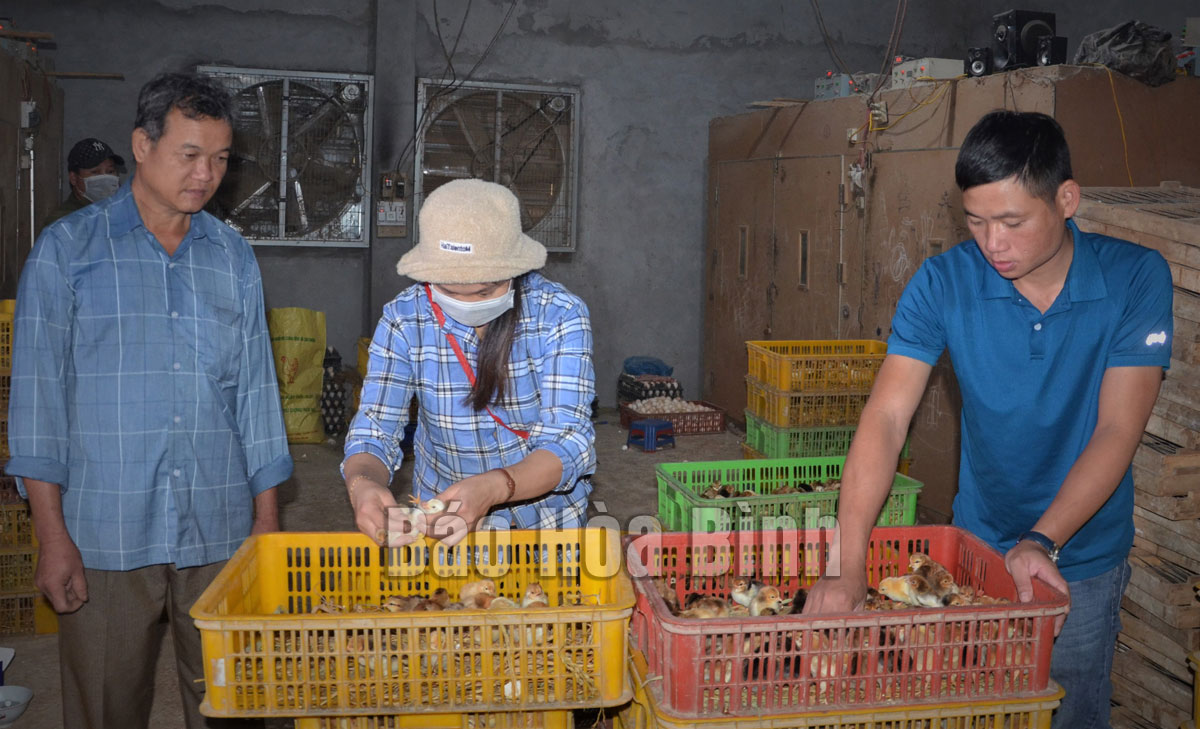
(HBO) – A disadvantaged household but thanks to an access to loans, Bui Van Hue's family in Dang 2 hamlet, Quyet Thang commune, Lac Son district started a model of hatching and breeding local chickens that brings about hundreds of millions of VND each year. In 2017, Hue encouraged several other households to form a livestock cooperative and supply chickens. Up to now, the cooperative has 10 members specialised in supplying commercial and breeding chickens to the market, contributing to increasing income and creating jobs for many local workers.

On average, Bui Van Hue's family and Chi Thien chicken breeding and supply cooperative in Lac Son district export over 30,000 local breeding chickens per month.
Hue said in 2012, he noticed that Lac Son's indigenous chicken breed, with small claws, firm and delicious meat, was highly favoured by the market. Starting from the need to maintain the purebred and to supply the market, his family invested in a hatchery to supply indigenous breeding chickens.
The biggest challenge is selecting the best brooding breeds. Lac Son district has cooperated with departments and agencies to carry out a research on preserving the gene pool of Lac Son's indigenous breeding chickens, he said.
By now, after many years of continuous trials and failures, Hue's family has perfected a closed-loop process of supplying Lac Son indigenous breeding chickens to the market. His family raises from 5,000-6,000 chickens per year, providing input materials for four hatcheries. On average, his family ships over 30,000 chickens per month, mainly to the local market and provinces such as Son La, Nghe An, and Thanh Hoa. From supplying breeding chickens and selling meat, his family earns an annual revenue of around 13 billion VND (565,000 USD) and a profit of nearly 2 billion VND.
Apart from directly selling to merchants, the cooperative sets up a distribution centre in Hanoi that specialises in providing live and ready-to-eat chickens at an average price of 130,000 VND/kg or higher. Since joining the cooperative, each household has planned a concentrated breeding area of about 1-2 ha, raising an average of 1,000-2,000 chickens per batch. Considering market demand, the cooperative expects to expand the scale of breeding and adopt VietGAP standards, ensure food safety and hygiene, and develop into a value chain for its products./.
Since the beginning of this year, under the direction of the Department of Agriculture and Environment, the Sub-Department of Agricultural, Forestry, and Fishery Product Quality Management has strengthened the integration of the professional activities to promote and guide the organizations and individuals in the production and trading of agricultural, forestry, and fishery products to comply with the legal regulations regarding the use of chemicals, pesticides and veterinary medicines in crop cultivation, livestock farming and aquaculture. They also provide guidance to processing and manufacturing establishments on keeping the records to trace the product origins and using food additives from the approved list according to the regulations.
Hoa Binh province saw a significant rise in state budget revenue in the first two months of 2025, heard a meeting chaired by Vice Chairman of the provincial People’s Committee Quach Tat Liem.
Ha Thi Ha Chi, a 26-year-old graduate in law, has taken an unconventional path by returning to her hometown in Mai Chau district to establish the Tong Dau Cooperative, creating stable jobs for local women and bringing Thai ethnic brocade weaving to the global market.
As the Lunar New Year 2025 approached, pork prices surged, creating a profitable season for farmers in Tan Vinh commune, Luong Son district. Taking advantage of the rising demand, Can Minh Son, a farmer from Coi hamlet, sold over 30 pigs at 69,000 VND/kg, each weighing more than 100 kg. After deducting expenses, his family earned a profit of over 50 million VND.
alternate member of the Central Party Committee, Secretary of the Hoa Binh provincial Party Committee Nguyen Phi Long on March 5 had a working session with Yan Jiehe, Founder and Chairman of the China Pacific Construction Group, one of China's largest private corporations in the field of transport infrastructure. Deputy Secretary of the provincial Party Committee, Chairman of the provincial People's Committee Bui Duc Hinh and leaders of provincial departments and sectors also attended the working session.
The electronic printed circuit board (PCB) manufacturing and processing plant of Japan’s Meiko Group, located at Da River Left Bank Industrial Park in Hoa Binh city with a total investment of over 200 million USD, is expected to create thousands of jobs and make a significant contribution to the local budget.



